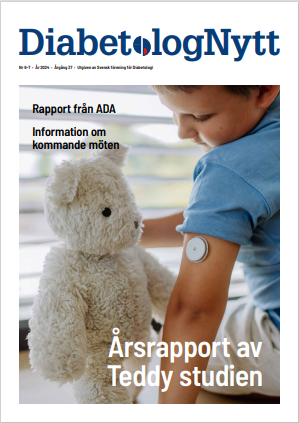From Internal Medicine News Digital Network
|
|
|
|
EASD BERLIN – Patients who had suboptimal glycemic control and reduced their hemoglobin A1c value by slightly less than 1% were 50% less likely to die within 5 years than were patients whose HbA1c did not improve, Dr. Katarina Eeg-Olofsson reported.
At 5 years, all-cause mortality was 15% among the group with no improvement in HbA1c and 10% in the group with improved HbA1c in an observational study of 12,359 patients with poorly controlled type 2 diabetes at baseline. The patients were selected from the Swedish National Diabetes Registry and their outcomes were verified by the Swedish Cause of Death and Hospital Registries. None of the patients had any cardiovascular or coronary heart disease at baseline
After adjusting for baseline risk factors and treatment changes during the study period, patients whose HbA1c decreased were half as likely to develop cardiovascular or coronary heart disease as were those whose levels increased. They were also 33% less likely to experience fatal cardiovascular disease and 41% less likely to die from any cause than were those in the poorly controlled group. All of these differences were statistically significant, she said at the annual meeting of the European Association for the Study of Diabetes.
”Patients with poorly controlled blood glucose clearly benefit” from gaining and improving glycemic control, said Dr. Eeg-Olofsson of the University of Gothenburg, Sweden. ”We must make an effort to identify patients who don’t respond to diabetes medications earlier.”
For the study, Dr. Eeg-Olofssson separated the patients into two groups: Those whose HbA1c decreased by at least 0.1% over the 5 years (6,841) and those whose HbA1c remained stable or increased by at least 0.1% (5,518).
At baseline, the patients averaged 62 years old, with mean disease duration of 9 years. Their average baseline HbA1c was 7.8%, and their mean body mass index was 30 kg/m2. Their mean blood pressure was 140/78 mmHg; 62% were taking antihypertensives and 46% were on lipid-lowering drugs.
After 5 years, mean HbA1c was 7% in the improved-control group (-0.8%) and 8.4% in the poorly controlled group (+0.7%), she said.
By then, 12% of the well-controlled group and 20% of the poorly controlled group had developed coronary heart disease. Cardiovascular disease was present in 17% of those in the well-controlled group and 30% of the poorly controlled group. Both these findings were statistically significant.
Dr. Eeg-Olofssson had no financial disclosures.
Nyhetsinfo
www red DiabetologNytt






